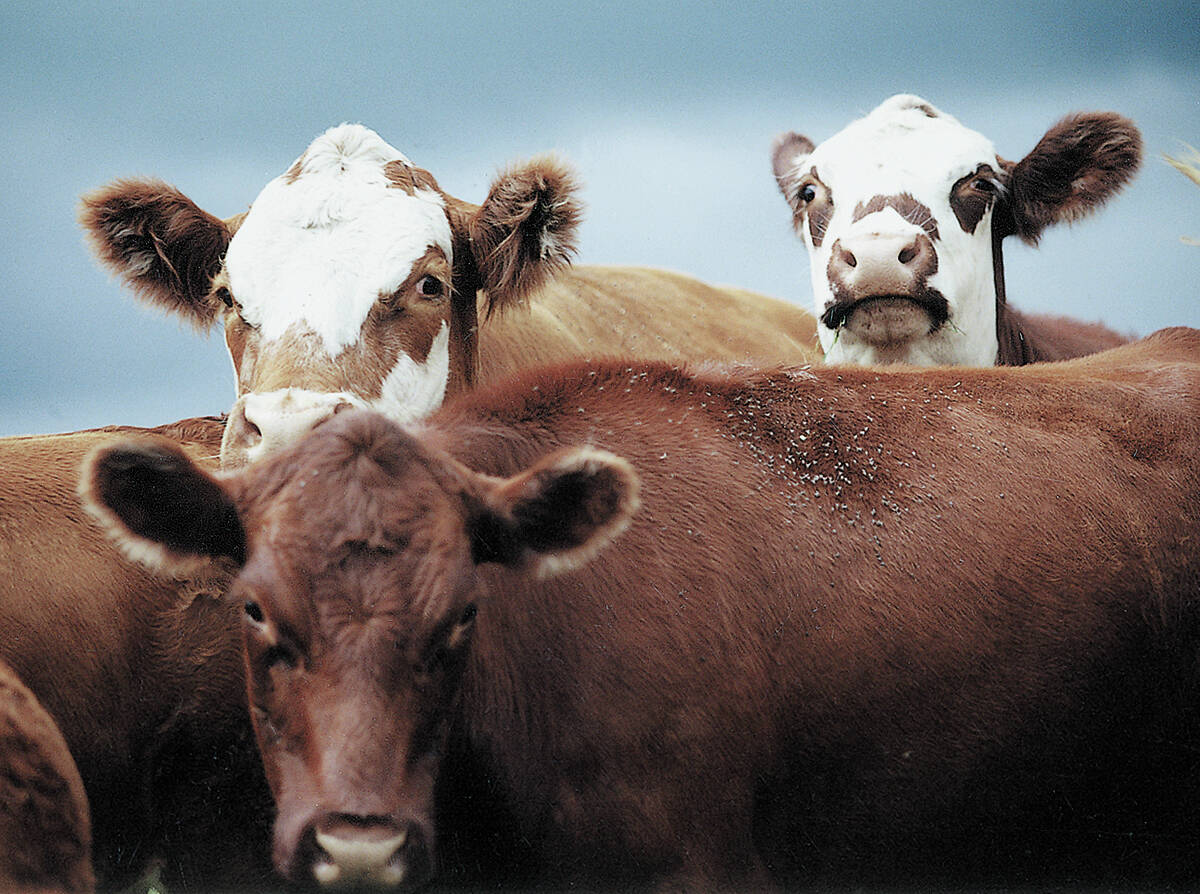The large drop in Chinese markets last week caused market volatility around the globe. Cattle futures were caught up in the larger market trends and on Aug. 26 hit their lowest point since May 2014. December live cattle futures dropped below the previous low set in February.
Those prices recovered somewhat, but Canfax said the bottom is unknown and the short-term trend in the market is downward.
Caution in fed cattle
Lows in the futures market were the likely cause of reduced U.S. interest in fed cattle last week. The weighted average steer price of $181.36 was a new low for the year.
Read Also

Canfax cattle market report – October 30, 2025
The Canfax cattle market report for October 30, 2025. Fed & feeder cattle prices, butcher cow trends, and cutout market insights.
Competition from local packers was limited and dressed bids for mid-September pickup were generally $4 to $5 lower than the previous week. Live trade was light and about $2 lower than the previous week.
Packers were not aggressive, and bids remained flat even after the partial futures market recovery last week. Some premiums were available for producers who are able to hold cattle until October for delivery.
Most sales were for earlier delivery as producers opted to keep cattle moving.
Canadian steer carcass weights averaged 907 pounds last week, the largest so far this year and the first time average weights have ever averaged more than 900 lb. in August.
Fed steers averaged $181.36 last week, down $2.48 from the previous week. Heifers averaged $180.82, unchanged from the previous week.
Non-fed outlook brighter
Rain across much of the Prairies provided optimism for more available feed and forage.
D1, 2 cows traded at $132-$148 to average $139.93, down $167 from the previous week. D3 cows ranged from $120-$134, with an average of $127.80, and rail grade animals traded at $269-$274. Slaughter bulls traded at $169.36, down 58 cents from the previous week.
Western Canadian cow slaughter totalled slightly more than 5,500 head, the second consecutive week in which slaughter volumes exceeded year-ago volumes.
The butcher cow market trended lower but is still higher than the year-ago level. Larger slaughter bull volumes have been reported at commercial auctions as producers pull breeding stock from pastures.
Feeders steady
The cash feeder market was generally unaffected by market volatility last week and the tone was steady to higher.
The market seems to be ignoring the larger discount in the futures market as prices remain strong for forward delivery yearlings.
Canfax said prices are expected to remain strong, even though many feedlots are placing yearlings off side. The supply side of the yearling market is strong because many think a large percentage have already moved. Those prices bode well for the calf market, but there is more downside price risk than upside potential, said Canfax.
Cow-calf pairs traded at $2,400 to $3,250 last week. Prices were not available for bred cows and bred heifers.
Beef trade mixed
U.S. Choice traded at $244.21 last week, down slightly from $246.46 the previous week. U.S. Select traded at $233.12, also down from last week’s $235.58.
U.S. boxed beef prices also slipped $2.25 to $2.46 per hundredweight lower. Procurements for the Labour Day holiday were mostly finished, setting a weaker market tone.
Canadian AAA beef traded at $308.44, up about $3 from the previous week. Canadian AA cuts were at $304.87, up from $298.48 a week earlier.
Canadian boxed beef prices saw a rise for AAA, from $3.01 to $3.08 per cwt., and AA was up from $2.98 to $3.05 per cwt.
This cattle market information is selected from the weekly report from Canfax, a division of the Canadian Cattlemen’s Association. More market information, analysis and statistics are available by becoming a Canfax subscriber by calling 403-275-5110 or at www.canfax.ca.














